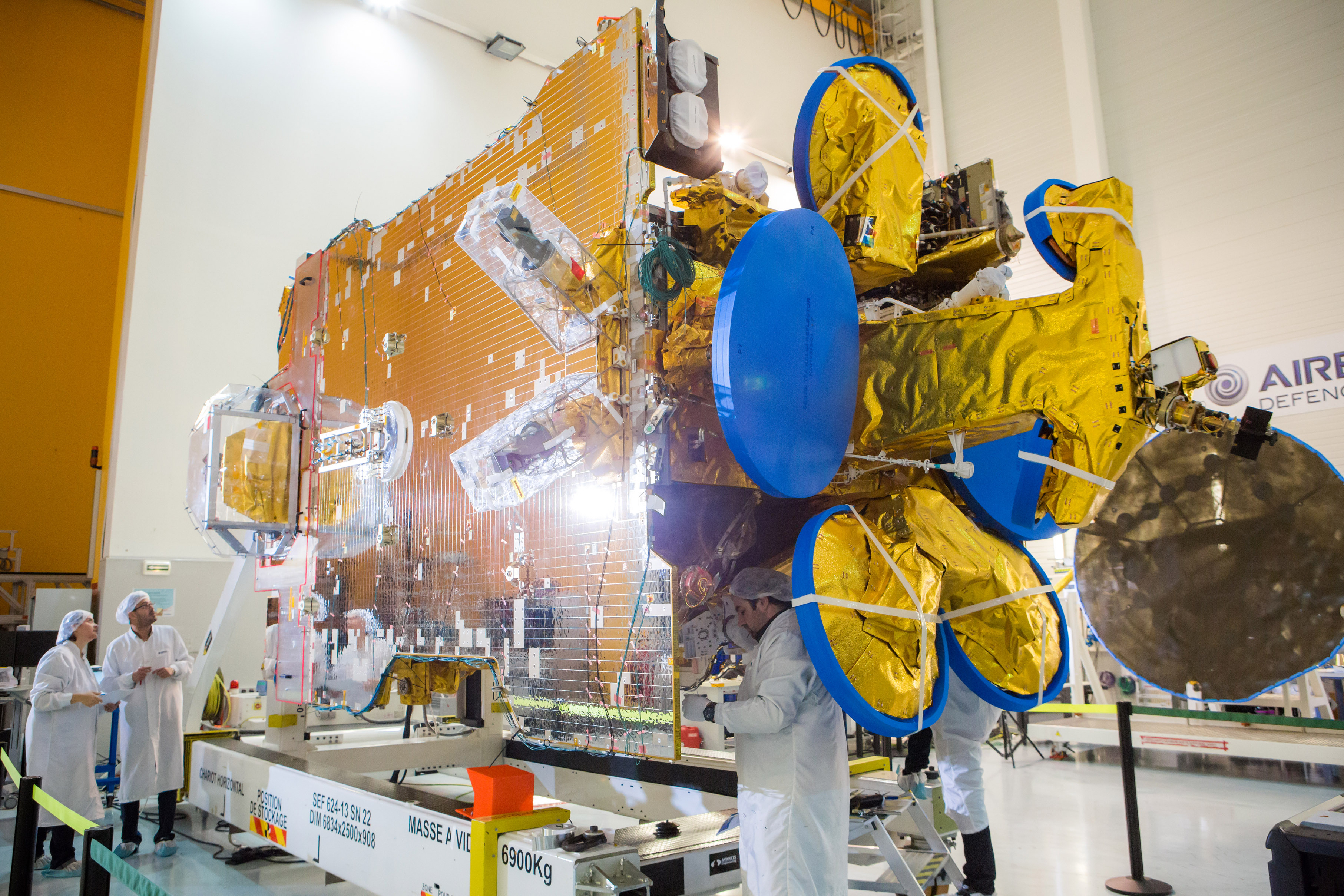SES ComSat Boss Proclaims High ‘Confidence’ in Bold SpaceX 1st Flight-Proven Rocket Launch- March 30


The SES-10 satellite was manufactured by Airbus Defence & Space in and is based on the Eurostar E3000 platform. It will operate in geostationary orbit.Credit: SES/Airbus
CAPE CANAVERAL/KENNEDY SPACE CENTER, FL – As the hours tick down to the history making liftoff of the world’s first recycled rocket, the commercial customer SES is proclaiming high “confidence” in the flight worthiness of the “Flight-Proven” SpaceX Falcon 9 booster that will blastoff with a massive Hi-Def TV satellite for telecom giant SES this Thursday, Chief Technology Officer Martin Halliwell told Universe Today at a media briefing.
“We are confident in this booster,” SES CTO Martin Halliwell told me at a press briefing on March 28, regarding SpaceX CEO Elon Musk’s bold vision to slash launch costs by recovering and reusing spent first stage rockets from his firms Falcon 9 launch vehicle.
The milestone SpaceX mission destined to refly the first ever ‘used rocket’ is slated for lift off on Thursday, March 30, at 6:27 p.m. EDT carrying the SES-10 telecommunications payload to orbit atop a ‘Flight-Proven’ Falcon 9 rocket from seaside Launch Complex 39A at NASA’s Kennedy Space Center in Florida,
SES-10 is to be the first ever satellite launching on such a SpaceX flight-proven first stage rocket, Halliwell explained.
The Falcon 9 was designed from the start of development by SpaceX engineers to be reusable.
“This thing is good to go!”
The Falcon 9 booster to be recycled was initially launched in April 2016 for NASA on the SpaceX Dragon CRS-8 resupply mission to the International Space Station (ISS) under contract for the space agency.
The 156 foot tall first stage was recovered about eight and a half minutes after liftoff via a pinpoint propulsive soft landing on an tiny ocean going droneship prepositioned in the Atlantic Ocean some 400 miles (600 km) off the US East coast.
The booster is one of eight first stages recovered by SpaceX so far, either by landing on a barge at sea or on a landing pad on the ground.
“We [SES] have been through this vehicle with a fine tooth comb,” Halliwell elaborated.
The boosters are carefully checked and refurbished to confirm their integrity and utility, and the first stage Merlin 1D engines are re-fired multiple times to confirm they will function reliably and robustly.
“SpaceX has been through this booster with a fine tooth comb. This booster is a really good booster.”
Is this a high risk strategy to be first in line launching an expensive satellite on a used rocket, I asked? Why are you confident?
“There is not a huge risk,” Halliwell emphatically. “In this particular case we know that the reusability capability is built into the design of the Falcon 9 vehicle. I think its baseline is to fly nine times. We are flight #2.
“We have tested this thing. We have run the engines up! Halliwell elaborated.
SpaceX has run full duration static fire tests as well as shorter 3 to 5 second hold down tests on the pad.
Indeed this booster was successfully checked out during a brief engine test lasting approximately five seconds at 2 p.m. today, Monday March 27, with the sudden eruption of smoke and ash rushing into the air over historic pad 39A on NASA’s Kennedy Space Center during a picture perfect sunny afternoon – as I witnessed from Space View Park in Titusville, FL.
“We have also looked at the airframe, Halliwell went on. “We have looked at the various components. This thing is good to go.”
“We don’t believe we are taking an inordinate risk here.”
SpaceX says the cost of a Falcon 9 launch is about $60 million.
Halliwell would not disclose the discount SES is receiving for this launch by utilizing a recycled rocket. But SpaceX officials have been quoted as saying the savings could be between 10 to 30 percent.
“So with that we can go back to our insurers and we can explain that risk exactly. And we can back it up with analysis and test data. So I don’t agree that we are taking a huge risk here!” Halliwell told me.
“From a pricing point of view, the launch cost pricing is really irrelevant. The delta in cost is really not relevant or material.”
SpaceX, founded by billionaire and CEO Elon Musk, inked a deal in August 2016 with telecommunications giant SES, to refly a ‘Flight-Proven’ Falcon 9 booster.
Luxembourg-based SES and Hawthrone, CA-based SpaceX jointly announced the agreement to “launch SES-10 on a flight-proven Falcon 9 orbital rocket booster.”
The flight proven SpaceX Falcon 9 rocket will deliver SES-10 to a Geostationary Transfer Orbit (GTO).
SES-10 has a launch mass of 5,300 kg or 11,700 pounds, which includes the dry mass and propellant.
The spacecraft utilizes for both chemical propulsion for orbit raising and electric propulsion for station keeping.
The post SES ComSat Boss Proclaims High ‘Confidence’ in Bold SpaceX 1st Flight-Proven Rocket Launch- March 30 appeared first on Universe Today.
Universe Today
Go to Source
Powered by WPeMatico